Top 10 Most Successful Pirate Plunderers in History
Suggested by SMSWe have a love affair with pirates. Since Pirates of the Caribbean hit theaters a few years back, it seems like everywhere there are images of good-natured pirates sailing under the Jolly Roger. But, unfortunately, the movie Pirates presents a less-than-accurate representation of how the plundering life would have really been. The romanticized notion of swashbuckling, good-natured pirates who raided ships for great treasure is a little overrated. Most of the time, pirates didn’t get any treasure at all. In fact, many pirates throughout history have been notoriously poor. It’s only been an occasional swashbuckler who has hit it big with pirate booty.
The following is a list of 10 great pirate plunderers from history. These guys might not all have been rolling in treasure, as depicted in the movies, but they did do some notorious pillaging in their day.
10. Ushkuiniks
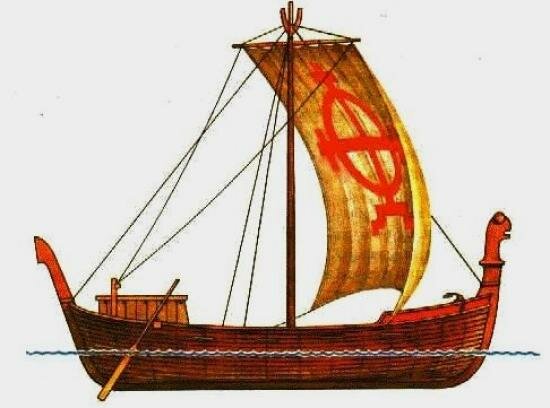
The ushkuiniks were a medieval band of pirates based in the Old Russian republic of Novgorod, and they were feared raiders in their time. The name “ushkuinik” comes from “ushkui,” which is the term for the long, flat boats that the pirates used for swiftly traveling the Volga River. Fierce warriors from Novgorod were active as early as the 10th century, but it wasn’t until the 1320s that the ushkuiniks were well organized pirates. Then, they enjoyed the patronage of Novgorodian elite families, who wanted to intimidate neighbors with military force.
Intimidation wasn’t the only thing the ushkuiniks did. They were known for pillaging, killing, and destroying entire cities. Over a period of about 30 years, the ushkuiniks sacked a burned multiple cities on the Upper Volga River. In fact, the city of Kostroma was so badly burnt by the ushkuiniks that it had to be rebuilt in a new location! They also looted the city of Nizhny Novgorod multiple times and were feared as far away as the city of Kazan, which was more than 200 miles from the ushkuinik’s base. Eventually, however, the Volga region came to peace, at least in terms of pirating. The ushkuiniks fell apart as the power of Muscovy grew stronger and overtook Novgorad.
9. Dunkirkers

The Dunkirkers pillaged trade ships for more than 80 years, collecting merchant’s wares and supplies as plunder. They were a group of privateers who wreaked havoc on the Dutch during the Eighty Years War from 1568 to 1648. During that time, the Dutch Republic was revolting against the Spanish Empire, and although the rebels would eventually be successful, Spain didn’t allow the Dutch to gain independence easily. The Spanish monarchy stationed war ships at the Flemish city of Dunkirk, just a few miles from Dutch lands. Eventually, private ships joined the Spanish war fleet in the fight against the Dutch, and together these privateers were called the Dunkirkers. The Dutch simply called them pirates.
The Dunkirkers main goal was to damage Dutch shipping. And they did it well. The Dunkirkers managed to capture multiple Dutch vessels, which effectively destroyed the republic’s fishing industry. Many trade ships were also captured on their way back to the Dutch Republic filled with valuable cargo. After 1621, the Dunkirkers were at their peak, capturing an average of 229 Dutch ships each year! They also took fleets of neutral British vessels carrying supplies. Finally, in 1646, the pirating ended when the city of Dunkirk was captured with a combined effort from France and the Dutch Republic.
8. Ching Shih (1785-1844)

Little is known about the early life of Ching Shih, a prominent female pirate and one of history’s greatest plunderers. Her real name has been lost; Ching Shih, which means “widow of Zheng,” only relates her to her fellow-pirate husband. At some point in her early life, Ching Shih began working as a prostitute at a floating brothel near Canton, a province in Southern China. In 1801, she met and married Zheng Yi, a famous Chinese pirate. She joined Yi on his ship and learned pirating ways.
Shortly after Ching Shih’s marriage, her husband banded together powerful pirate groups into one alliance. The pirate band was greatly feared and regularly sacked ships in the Canton area. When Zheng Yi died in 1807, Ching Shih worked her way into the command of the pirate group. She terrorized towns and markets up and down the Chinese coast, collecting large sums of money in tribute along the way.
In 1810, the Chinese government offered Ching Shih amnesty, which she took, ending her pirating career. Ching Shi was allowed to keep her looted property. She married her adopted son and set up a gambling house on land.
7. Godfrid Haraldsson (820?-856?)
As a notorious Viking fighter, Godfrid Haraldsson did his fair share of pillaging. Haraldsson was actually born to a royal family–he was the son of Danish King Harald Klak–but he never ascended to the throne. Instead, Haraldsson teamed up with his cousin Rorik to plunder kingdoms near Denmark. The pair raided several small kingdoms in what is now France, and they even took possession of Frisia, an area on the north coast, for a time.
After successfully raiding many small cities and kingdoms, Haraldsson decided to go after a big prize, the large kingdom of Francia. The entire Frankish army was summoned to face Haraldsson and his fellow Vikings, but they made no progress. Eventually, Haraldsson left Francia with a large tribute. He returned to his native Denmark to try to take the throne from his father’s successor, but failed. Haraldsson then fell into obscurity. He probably either died on a raid or spent the rest of his life enjoying his earnings.
6. Henry Morgan (1635-1688)
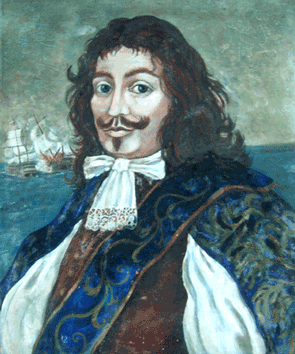
Sir Henry Morgan is one of the most infamous men in the history of the Caribbean pirates, having pillaged and plundered the majority of Spain’s colonial holdings during his reign on the seas. Morgan was born in Wales, but lived in Jamaica for much of his life. He became a captain and then an admiral in the British Navy based in Jamaica. Over the course of his career, he was meant to protect the English colony of Jamaica and prevent the Spanish from becoming too strong. But he took this mandate to the extreme, becoming a full-fledged pirate with the guise of English support.
During his pirating years, Morgan sacked and plundered multiple Spanish settlements, taking large quantities of treasure whenever possible. He also attacked plenty of Spanish ships. One of his most known undertakings was the sacking of Panama City, which was the richest city in New Spain at the time. He marched inland from the coast of Panama, eventually reaching the capital city, which he burned to the ground. Morgan killed and tortured many residents in his search for gold, but his Panama expedition was largely unsuccessful in terms of treasure. He returned to Jamaica and was reprimanded for recklessness.
Eventually, Morgan gave up piracy. He was one of the few pirates to ever retire after making a substantial fortune in plundering. He gained weight and took to drinking after his retirement. He died in 1688, possibly of liver failure from his heavy drinking. Today, Morgan’s successful pirating career and overindulging drinking habits are immortalized in Captain Morgan’s Spiced Rum, a popular brand of alcohol made in the Caribbean.
5. Wokou

The Wokou were Japanese pirates who were dreaded in China and Korea for their fearless attacks on trading vessels in the 13th to 16th centuries. Not only did Wokou pirates attack ships and take the goods on board, but they also received money in tribute from Chinese leaders eager to keep them away for their cities. The Wokou were originally commanded by feudal Japanese lords, who led ships filled with laborers and fishermen on raids. But interestingly, later Wokou raiding parties were composed of mostly Chinese rebels.
The Wokou were at their peak in the 14th century. During the period from 1376 to 1385, 174 pirate raids were recorded in Korea alone. The Korean capital of Gaeseong was a favorite place for the Wokou to pillage; they would raid that city repeatedly. Oftentimes, the Wokou would take all the grain stores in a town. Taking prisoners for slaves was another favorite thing of the Wokou. They were the terrors of the Yellow Sea for centuries. But by the mid 16th century, the Wokou had almost entirely disappeared due to new leadership in Japan.
4. Jean Fleury (d. 1527)

Jean Fleury arguably won the biggest stash of treasure of any pirate in history. Fleury was a French corsair, or privateer, who saw action in the Four Years’ War against Italy. But his best loot came in 1522, when Fleury and his crew overtook two Spanish galleons that were loaded with treasure from the New World. The Spanish ships were holding cargo from Cortez’s conquest of Mexico; each vessel was packed with gold and silver object from the Aztec’s capital city. Fleury snuck up on the galleons as they were nearing the coast of Portugal. He took control of the ships and rerouted the treasure to England, where King Francis I was given it in tribute. But Fleury himself surely had a share as well.
Fleury’s pirating career continued the next year. He sacked more than 30 Spanish and Portuguese ships in that one year before being captured by the Spanish. Eventually, Fleury was hanged for piracy. Unfortunately for him, he didn’t get to take much advantage of his spectacular treasure.
3. Arab Warriors
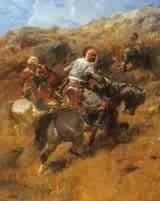
They didn’t do it by sea, by the Arab warriors of the 9th century sure did pillage some amazing treasure. In 876, Arab warriors sacked the city of Rome and plundered the Basilica of St. Peter, which was filled with expensive and important artifacts from the early Christian Church. Another major basilica, San Paolo, was robbed during the Arab attack as well.
Pope Paschal I had moved many of the Church’s most important treasures into the fortified central structure of the city years before. Arab warriors had begun expanding into southern Italy under Paschal’s reign, and he knew it was only a matter of time before they would make it to Rome itself. But despite Paschal’s preparation, much of the city outside the walled area–including the two basilicas–was completely ransacked.
2. Somali pirates
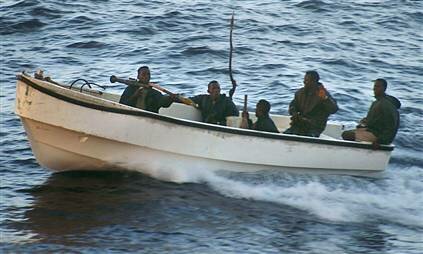
Even in modern times, pirates are paying the bills with looting, sacking, and hijacking. The pirates who work off the Somali coast are a perfect example. These pirates get their plunder by taking over shipping vessels and demanding ransom. In the year prior to November 2008, Somali pirates made an estimated $150 million!
Somalia is one of the poorest nations in the world, so any way to make millions of dollars is appealing there. Hence, pirating became popular. Pirates have been active off the coast of Somalia since the country’s government effectively collapsed with the start of civil war in 1990. Since then, piracy has been a huge threat to international shipping. Many countries around the world have joined forces to stop pirate attacks, but the hijacking continues.
1. Sir Francis Drake (1540-1596)

Sir Francis Drake is known as the first person to circumnavigate the world, and today he is revered as a masterful explorer. But he was also a pirate.
To the English, Drake’s privateer lifestyle was considered heroic, but in Spain, he was considered the worst pirate around. His pirating ways actually began during his trip around the world; near Lima, Drake captured a Spanish ship laden with gold from Peru. After this first sacking, Drake heard of another Spanish treasure ship, Nuestra Senora de la Concepcion, which was sailing west. Drake’s crew chased the vessel and ransacked it as well.
After war broke out between England and Spain in 1585, Drake sailed back to the New World and destroyed the Spanish ports of Santo Domingo and Cartagena. He also captured San Augustin in Florida. Drake was second in command when the English defeated the Spanish Armada, and he destroyed countless Spanish ships during that time. Later, his sole task was to seek out and pillage or sink Spanish galleons. The Spanish King, Phillip II, put a 20,000 ducat (equivalent to about $8 million) price on Drake’s head, but he was never turned over. Drake died of dysentery in 1596 during another expedition to the New World.
Drake was never thought of as a pirate in the English consciousness, but his killing, pillaging, and looting ways definitely qualify him as such. And he wasn’t just any pirate; he was a skilled privateer. Drake’s hijacking of multiple Spanish treasure ships makes him one of the most successful pirates in history.






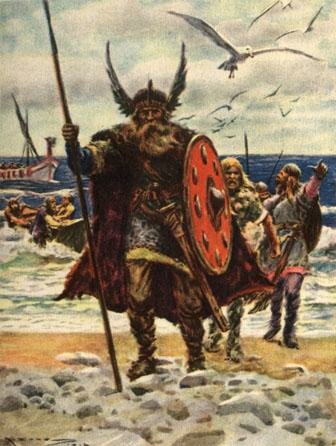

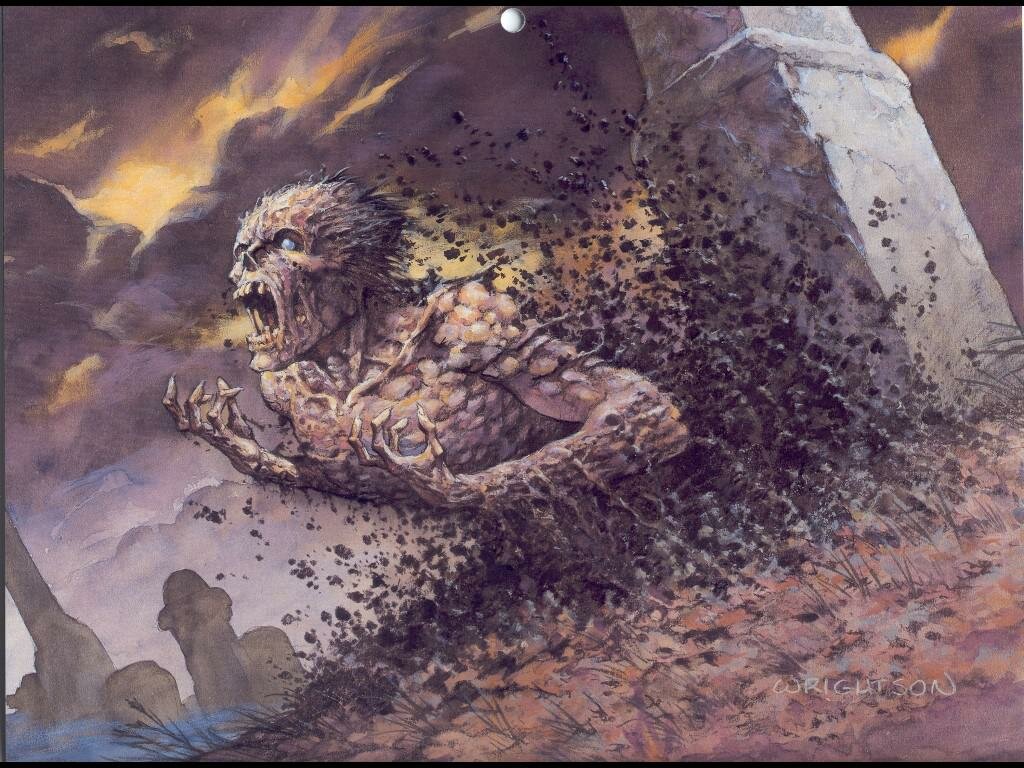

Sir Henry mMorgan And Sir Francis Drake were not pirates, they were privateers. A pirate takes from his nations ships as well as any one crossing their path. by the way, Captain William Robert Kidd wasn’t a pirate either, so don’t go there.